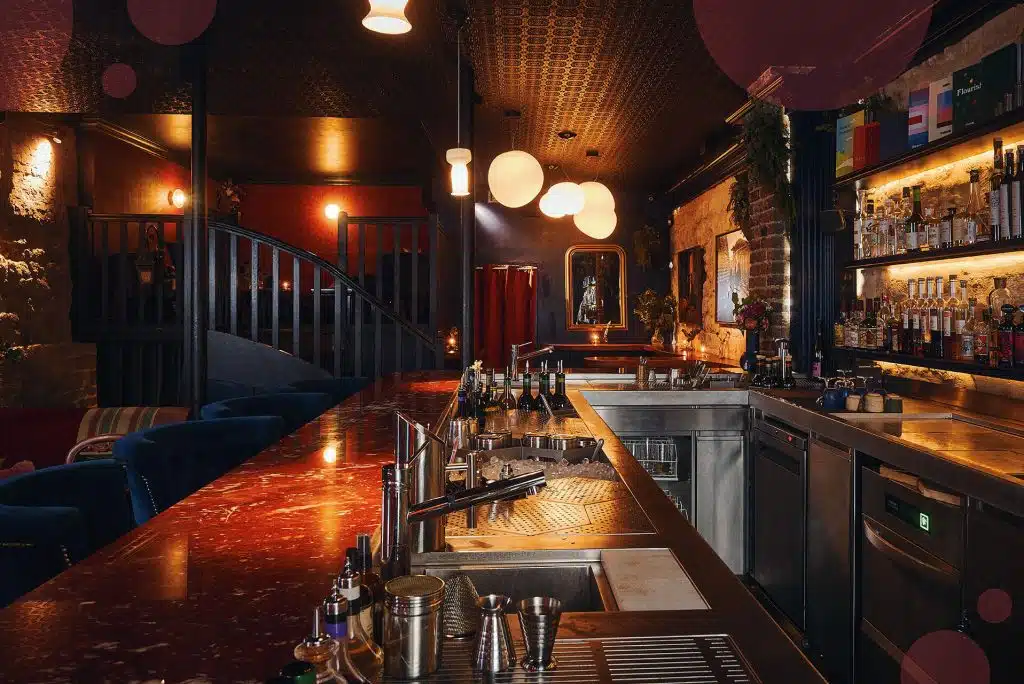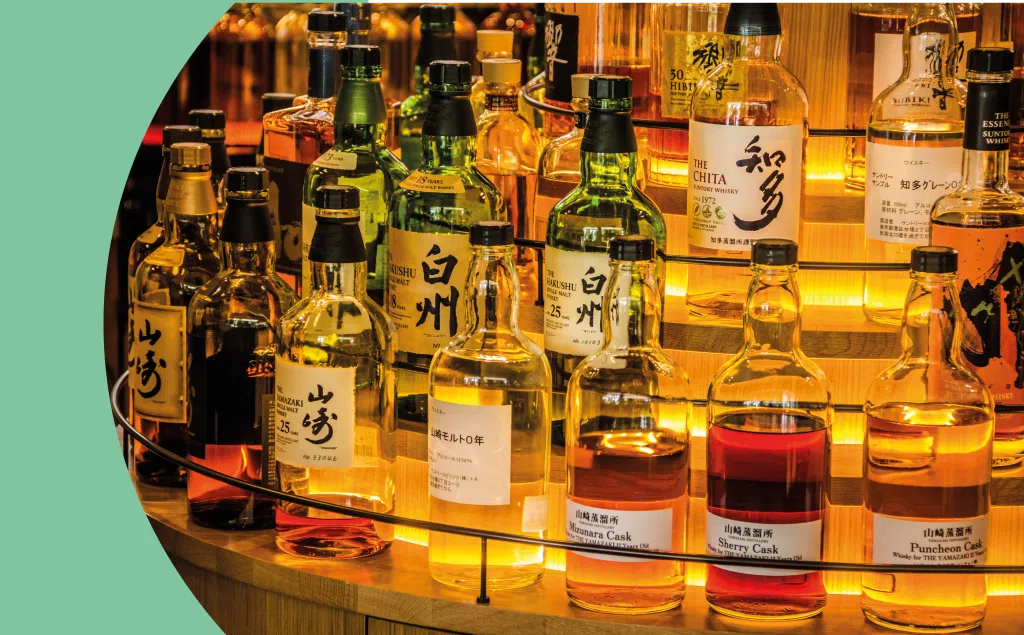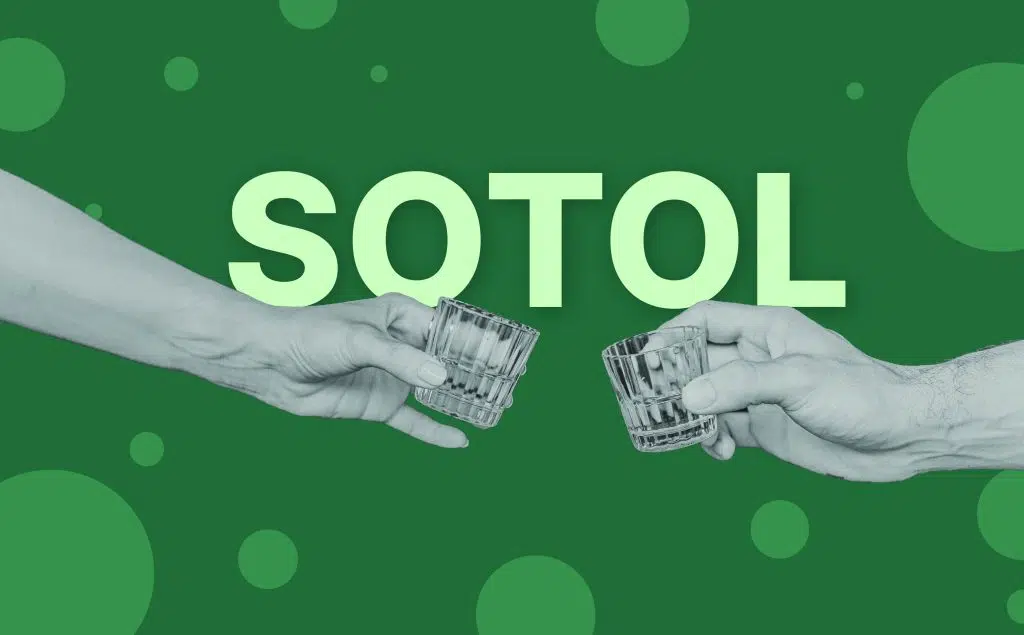Winner of the Ketel One Sustainable Bar Award and No. 6 in the 50 World’s Best Bars 2023, Paris’ Little Red Door combines serious cocktails with a serious farm-to-glass model. Director of bars Alex Francis sat down with us to share his forward-thinking initiatives.
How did your bartending journey begin?
When I was at university I worked in a bar to cover my living expenses and once I finished, I moved to London. I found myself a bartending job to keep me ticking over and ended up working in establishments like Bourne & Hollingsworth, Rules and The Devil’s Darling. As time went on, I loved it more and more and found myself considering a career in bartending.
Why Paris and why Little Red Door?

One of the reasons why I fell in love with bartending was its accessibility. You can do it anywhere! I reached out to people I knew around the world to see if there were opportunities.
Then, in 2018, Little Red Door offered me a position and I found myself suddenly travelling to Paris! I left a very demanding hotel job and lifestyle in London, so moving to Paris as a bartender was a welcome break for me.
Within a year I’d gone from bartender to bar manager. But then the Pandemic hit. Myself and Creative Director Rory started to develop a plan for what would be later called the ‘Farm-to-Glass Model’. It became clear I was much better suited to the operational side of things and I was promoted to Director of Bars.
What motivates you?
It doesn’t matter what role you play in a team, you’re all motivated by the same thing: the success of the bar.
For me, seeing change is a big motivation. Another motivation is moving the industry forward into setting ‘minimum standards’, for example, in representation and sustainability.
Guiding hospitality towards setting these minimum standards is important, because once one bar does, so does another ,and before you know it, you’ve moved the entire industry!
Last year, Little Red Door won the Ketel One Sustainable Bar Award. How was it to win? And what does sustainable bartending look like to you?
It was incredibly rewarding to win the award, as we worked very hard on being more ecologically responsible.
When it comes to sustainable bartending, produce is massive. Choosing to buy seasonal, local produce has a great effect on the environment and local economy. Whether that’s the business itself, the customers spending money in the bar or the small, local farms producing the goods for you, it has a knock-on effect.
But this is hard to achieve currently because it’s so easy and cheap to get produce from abroad regardless of season and environmental cost. So, we need to incentivise people to think more locally. If we build the system then it will be very hard to disrupt because it will benefit multiple industries at once.
What’s the inspiration behind Little Red Door?
Little Red Door opened 11 years ago and was voted one of The World’s 50 Best Bars within a year.
After this success, the founders brought in Creative Director Remy Savage, who was passionate about blending art and cocktails together. His first menu, Evocative, had no words. Instead, artists were asked to interpret the reactions of drinkers drinking the cocktails from the menu and represent this in art form. It was extremely successful and the bar continued this style for the duration of Remy’s time there.
After Remy had left, the concepts changed. The menus became more literal and there was a focus on tangible aspects like ingredients and flavours.
Nowadays, we focus on a Farm to Glass model. It took us three menus over two and a half years to get to where we are today. Buying in-bulk seasonal produce and turning them into drink ingredients, putting the producer and their goods at the centre of the guest’s experience. We’ve even decorated the bar with beautiful pictures representing them all.
Now, we can turn around to guests and tell them exactly where everything comes from and where every penny goes.
When designing drinks, what influences LDR’s creations?
Undoubtedly, the Farm to Glass Model.
France naturally focuses a lot on local produce, so it just makes sense to do this, even without the environmental or economic benefits. The produce does the talking, it’s up to us to try and extract that creativity from it and turn it into a good drink ingredient. We always want to do a good job well, rather than fail by being super ambitious.
This model also removes the need for brands to innovate for us. Instead, we’re challenging them to innovate from what we’re looking for!
What is your favourite LRD cocktail?
My favourite on this menu is ‘Pepper’. The drink itself is a Gimlet-style cocktail that has smoky, vegetable and peppery notes. Very moreish! But the process was super interesting.
We made two distillates, one with raw pepper and one with char-grilled pepper. Interestingly, the char-grilled pepper distillate we found to be more in line with our perceptions of the pepper flavour, with the former coming across as too generically ‘green’ and without any kind of determination.
The char-grilling added an earthy, smokiness to the experience that worked so well.
What’s the bar scene like in Paris today?
The best it’s ever been.
It’s hard to open new bars in Paris, because of the way the city is. Compare it to London and New York, where everything is constantly evolving because seasons and trends change quickly – this doesn’t happen in Paris. But, it’s more stable, so if you do it right, the Parisians will back you and are most likely going to stay. This is one of Paris’ biggest strengths, in my opinion.
Now, there are so many really high-quality bars like Candeleria, Danico, Bar Nouveau, The Honeymoon and Little Red Door, of course. Each offers something different, so everyone can find what they’re looking for here easily.
You’re at No.6, in the World’s 50 Best Bars 2023. What does that mean to you?
The fact that Little Red Door has been there for 10 years is a massive achievement, and I’m really proud to be part of this success and how far we’ve come as a business.
The whole team works so hard, so it’s great to have the recognition!
Which is your favourite bar in the world?
Caravan in the west of Paris.
It’s in a beautiful residential area and has these stunning art deco doors. But the cafe itself is a protected site, so everything in it is original. The mixed drinks are simple but done well, so you don’t have to think too much when you’re in there. Personally, I love ordering a Tunnel or Trocadero when I’m visiting. It’s very poetic in its charm.
Which ingredient do you love working with the most?
Beetroot. It can be found all over the world and is interesting to work with. We make a mistell out of it, which is fortified beetroot juice. And then with the skins, we make a distillate. It turns out so smoky and earthy, it’s a superb replacement for mezcal.
That being said you can easily find lighter, sweeter notes from beetroot too. So it’s very versatile and pairs nicely with many different flavours.
In your opinion, the best modern classic cocktail is…
I, personally, love an Americano as a modern classic cocktail. It’s so simple with a low ABV and refreshing, bittersweet flavours. You could have a pint of it or a thimble, and you’d feel either way refreshed.
What is next for Little Red Door?
Over the next three months, we’re going to be going through a transition. We’re moving on from the Trilogy Menu because, whilst it’s served us well, we were becoming quite beholden to it.
Instead, we’re going to be putting more focus on our tasting menu. It’s seasonal and changes constantly. Drinks may only last for a week or two because of this.
And for the bar industry as a whole?
I think consumer habits are changing and expectations are evolving. As a result, we have to adapt to that.
It’s no longer a case of simply opening a cocktail bar—you’ll need to have something extra for customers to keep coming back. Take Double Chicken Please in New York City, for example: It’s more than just a bar. It’s a creative space that’s developed itself into a brand, so it’s garnered itself worth beyond simply being a bar.
Customers are looking for that USP, so it’s up to us to develop in a way that can serve that need.









